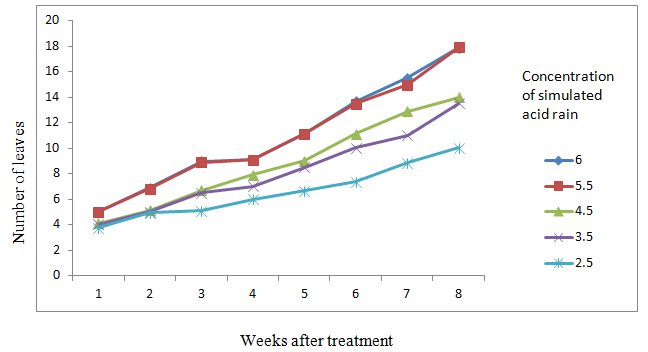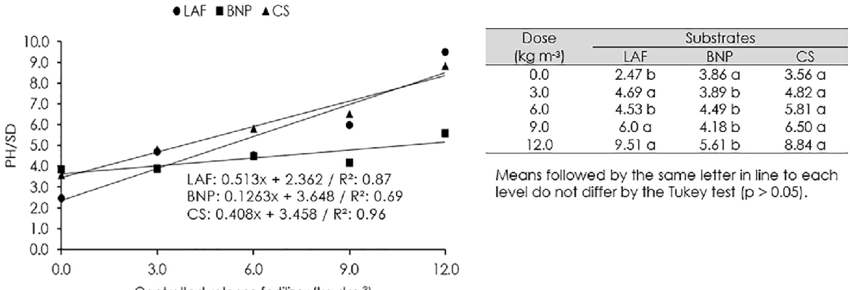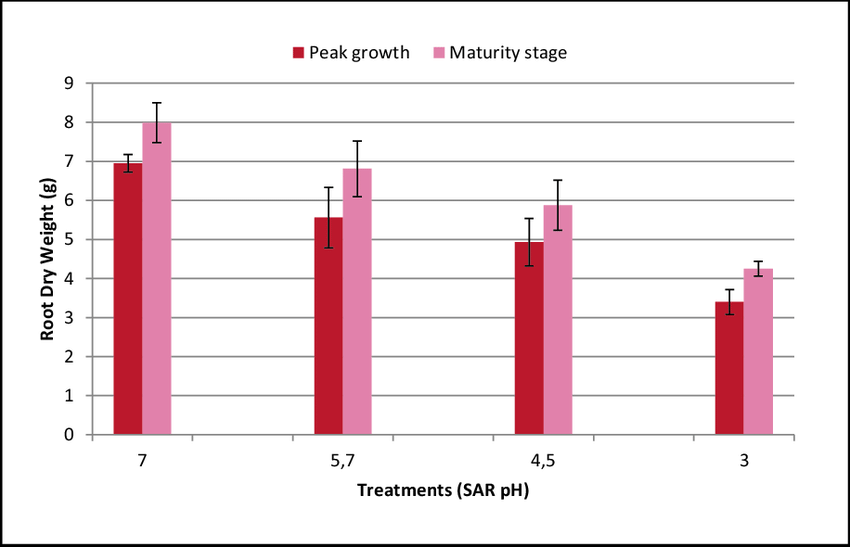Introduction
Acid rain is comprised of different forms of organic components which are released from the atmosphere, whether in dry or wet form. Acidic rain can present itself in the form of acidic dust, rain, snow, or fog. The acidic rain is caused when sulfur components react with oxygen and water in the atmosphere. The components of sulfur results from the bunning of natural sources such as fossils hence releasing acidic gasses in the atmosphere (McGivney et al., 2019). The acidic rain is well known for harming trees. It damages the plants and stream/ lakes whose water enter directly into the ground. The confers trees are largely affected by the acidic rain hence leading to the aspect of deforestation. The acidic rain can be on ca destroy the leaves of the trees hence defecting the photosynthesis process, which helps form conversional rainfall.
Furthermore, when the acidic water enters the soil, useful microorganisms and nutrients meant for the growth of trees are destroyed, making the confers trees die (McGivney et al., 2019). Therefore, this review paper focuses on analyzing the literature view relating to the effect of acidic rain on coniferous trees in the world. The literature review is based on the scientific research done on the subject matter and analyses the situation using graphical presentations.
Literature Review
Studies on the effects of acidic rain on coniferous trees show that the impact is presented in dry deposition gaseous (sulfur and nitrogen components) and wet deposition in the form of water, fog, and mist. Industrialized places are at the highest risk of receiving acidic rain (Takahashi et al., 2020). Industries emit gases like sulfur and nitrogen into the atmosphere, which react with oxygen to form SO2 and NO2, respectively (Takahashi et al., 2020). The two components then undergo a chemical reaction with water leading to sulfuric acid and nitric acid. The acidic water then precipitates in the form of rainfall hence negatively impacting the coniferous trees. Acidic rain can lead to deforestation since trees dry due to acidic components in the soil (Huang et al., 2019). The acidic components in the soil prevent the trees from absorbing water.
The long-term impact of acidic rain is drought and the lack of convectional rainfall. Foroutan & Ghazanfari (2021), Ayyasamy et al. (2020), and Rehioui et al. (2021), studies on acidic rain reveal that many parts of the world are experiencing extreme dry seasons due to the destruction of trees by acidic rain. Some of the nutrients that contribute to the growth of coniferous trees are magnesium, aluminium, and calcium (Gilani et al., 2020). The rection of acidic water with minerals such as aluminium makes it difficult for the plants to absorb water from the soil (Li et al., 2019). The osmosis process involved in the absorption of water is distorted. There is a low concentration of water in the soil than in plants; hence no water movement to the trees. As a result, most coniferous trees get dehydrated hence getting dry.
Acidic rain leads to the mobilization of risky and toxic components in the soil, which affects the growth of coniferous trees negatively. Shabnum Masood et al. (2021) study on the impact of acidic rain on soil and the plants shows that extreme chemical reactions in the soil between the acid and minerals can destroy trees. Metals such as lead and copper, when related to acidic rain in the soil, prevent the supply of water to plants (Li et al., 2019). The soil also lacks nutrients that are useful in the growth of coniferous trees (Samimi et al., 2021). Furthermore, coniferous forests/ trees and found in areas that experience long winter seasons, such as in Europe. Therefore, the reaction of the acidic rain with other gases in the atmosphere may lead to changes in the winter season hence destroying coniferous trees. Changes in the seasons, which are caused by acidic rainfall, result in prolonged dry periods and deforestation.
However, other studies argue that acidic rainfall can impact coniferous trees positively. The addition of nitrogen into the sol by acidic rain is helpful for the coniferous trees, which have enough supply of nutrients for their growth. In the plant’s ecosystem, there is always stiff competition for the absorption of nutrients. The nitrogen found in the acidic rain, therefore, causes the faster growth of trees hence contributing to the maintenance of a good environment. The acidic rainfall is still known for server consequences on the coniferous trees despite nitrogen helping absorb nutrients. Many studies have been conducted leading to a conclusion that rain badly influences the environment in the hence stagnating the growth of trees.
Areas highly impacted by acidic rainfall comprise Europe, America, India, and China. Studies have been conducted to determine how the coniferous forest can be conserved and protected against acidic rainfall. Since such areas are highly industrialized, measurements have been put in place on how the wastes can get treated to avoid the prolusion of the ecosystem (Moreira et al., 2020). The ozone layer has been greatly destroyed by human activities and the greenhouse effect on the environment. Destruction of the ozone layer also contributes to the destruction of coniferous forests in the world, and this is evident the climate changes studies.
The literature from scientific web collections using specific variables such as acidic rain (AR) and coniferous trees presents wide information on how forests are affected by acidic rain. With a great reliance on the scientific studies on the topic, the analysis of data involved analysis of the scientific data of the study using competent analysis tools (Li et al., 2021). From the study, it is clear that acidic rain destroys the leaves of coniferous trees (Moreira et al., 2020). The acidic rain contributes to acidic fogs and clouds, which might strip nutrients from the trees, leaving the leaves dead. (Moreira et al., 2020). The brown or dead leaves of the coniferous trees can not support the tree in the absorption of sunlight, and this makes the plant weak and unable to withstand the freezing temperatures (Sanders & Barreca, 2022). Studies show that trees which are in places that experience acidic rain have poor leaf foliage. Trees in such areas also have stagnant growth due to a lack of leaves which could help in the absorption of sunlight and the photosynthesis process. The graph in figure 1 shows how acidic rain affects the leaves of the coniferous trees. The acidic content in water is treated to determine whether the number of leaves will increase in number (Pham et al., 2021). One can clearly tell that after treating the water, the number of leaves increases, meaning that acidic rain reduces the number of leaves in plants. For instance, in week one, trees had a maximum number of leaves between 4 and 5.

Acids reduce the PH value of the soil hence stagnating the growth of the plant. An experiment on the growth of the stem using different PH values shows that the height increases with an increase in the PH value. The graph in Figure 2 Bellow shows how the tree’s stem increases after treating the acidic water. From the graph, it is clear that acidic rains lead to a decrease in the PH value of the soil and its components (Li, Liu, et al., 2021). However, the coniferous trees need the soil components of higher PH value for faster growth. Results in figure 2 show how the concentration of acidic rain impacts the PH value and growth of the stem. The graph shows that stem growth increases in centimetres when the PH value is high. The increase in the height of the stem shows that the growth of the trees can be supported by treating the factory wastes as a way of controlling acidic rain. (Debnath & Ahammed, 2020). It is therefore evident that the coniferous trees will stagnate their growth when acidic rain is released into the environment. The favourable PH value for growth is above 5.0. At the PH value of 8.0, the height of the stem increases by 12CM, proving soil with minimal acidic components supports the growth of the coniferous trees.

Acidic rain impacts the coniferous trees negatively by reducing the development of roots. Roots help in the growth of the plant by absorbing nutrients and water. The acid rain kills microorganisms in the soil, which are good for the development of the roots (Lewis, 2019). The roots become weak and unable to absorb water and nutrients, which are meant for the growth of the plant. Figure 3 shows the impact of acidic rain on roots. It is evident that as the PH value reduces (as a result of acidic rain), the growth of roots reduces.

Conclusion
The review paper focused on the analysis of the scientific studies/literature on the impact of acidic rain on coniferous trees. From the literature and study of the scientific material, it is evident that acidic rain reacts with the minerals in the soil hence drying up the trees. Comprehensive studies show that acidic rain has a negative impact on the growth of coniferous trees. There is a need for the highly industrialized regions to develop mechanisms to control acidic rain. It is advisable to treat gaseous wastes which the factories emit, and this will control the issue of acidic rain. Common gases reacting with water to form acid comprise nitrogen and sulfur. Acidic water also reacts with the minerals in the soil, such as iron, and this can lead to poor absorption of water through osmosis.
References
Ayyasamy, S., Jhosiah, D. F., Prince Wesly, K., Aravind, C., & Swetha, V. (2020). Role of Internet of Things (IoT) in Protection of Soil and Plant Life from Acid Rain Disasters.Lecture Notes in Networks and Systems, 807–820.
Debnath, B., & Ahammed, G. J. (2020). Effect of Acid Rain on Plant Growth and Development: Physiological and Molecular Interventions.Contaminants in Agriculture, 103–114.
Foroutan, M., & Ghazanfari, E. (2021). Mineral Dissolution/Precipitation in Carbonate Rocks: Risks Posed by Climate Change-Induced Acidic Flow. Geo-Extreme 2021.
Gilani, M. M., Tigabu, M., Liu, B., Farooq, T. H., Rashid, M. H. U., Ramzan, M., & Ma, X. (2020). Seed germination and seedling emergence of four tree species of southern China in response to acid rain.Journal of Forestry Research, 32(2), 471–481.
Huang, J., Wang, H., Zhong, Y., Huang, J., Fu, X., Wang, L., & Teng, W. (2019). Growth and physiological response of an endangered tree, Horsfieldia hainanensis merr., to simulated sulfuric and nitric acid rain in southern China.Plant Physiology and Biochemistry, 144, 118–126.
Lewis, M. (2019). Figure 3: Effect of simulated acid rain on root fresh weight at peak…ResearchGate.
Li, C., Liu, X., Meng, M., Zhai, L., Zhang, B., Jia, Z., Gu, Z., Liu, Q., Zhang, Y., & Zhang, J. (2021). The use of Biolog Eco microplates to compare the effects of sulfuric and nitric acid rain on the metabolic functions of soil microbial communities in a subtropical plantation within the Yangtze River Delta region. CATENA, 198, 105039.
Li, X., Wang, Y., Zhang, Y., Wang, Y., & Pei, C. (2021). Response of soil chemical properties and enzyme activity of four species in the Three Gorges Reservoir area to simulated acid rain.Ecotoxicology and Environmental Safety, 208, 111457.
Li, Y., Wang, Y., Wang, Y., & Wang, B. (2019). Effects of simulated acid rain on soil respiration and its component in a mixed coniferous-broadleaved forest of the three gorges reservoir area in Southwest China. Forest Ecosystems, 6(1).
McGivney, E., Gustafsson, J. P., Belyazid, S., Zetterberg, T., & Löfgren, S. (2019). Assessing the impact of acid rain and forest harvest intensity with the HD-MINTEQ model – soil chemistry of three Swedish conifer sites from 1880 to 2080. SOIL, 5(1), 63–77.
Moreira, R., Mendes, C. V. T., Banaco, M. B. F., Carvalho, M. G. V. S., & Portugal, A. (2020). New insights in the fractionation of Pinus pinaster wood: sequential autohydrolysis, soda ethanol organosolv and acidic precipitation. Industrial Crops and Products, 152, 112499.
Pham, H. T. T., Nguyen, A. T., Do, A. T. Ngoc., & Hens, L. (2021). Impacts of Simulated Acid Rain on the Growth and the Yield of Soybean (Glycine max (L.) Merr.) in the Mountains of Northern Vietnam.Sustainability, 13(9), 4980.
Rehioui, M., Abbout, S., Benzidia, B., Hammouch, H., Erramli, H., Daoud, N. A., Badrane, N., & Hajjaji, N. (2021). Corrosion inhibiting effect of a green formulation based on Opuntia Dillenii seed oil for iron in acid rain solution. Heliyon, 7(4), e06674.
Samimi, K., Farahani, M., Pakan, M., & Shirzadi Javid, A. A. (2021). Influence of Pumice and Metakaolin on Compressive Strength and Durability of Concrete in Acidic Media and on Chloride Resistance under Immersion and Tidal Conditions. Iranian Journal of Science and Technology, Transactions of Civil Engineering, 46(2), 1153–1175.
Sanders, N. J., & Barreca, A. I. (2022). Adaptation to Environmental Change: Agriculture and the Unexpected Incidence of the Acid Rain Program.American Economic Journal: Economic Policy, 14(1), 373–401.
Shabnum Masood, Er. Ajay Kumar Duggal, Er. Shabina Masoodi, Er. Irtiza Khurshid, & Er. Gulam –Mohi-ud-din Rather. (2021). Improvement in bituminous surface course using waste plastic in acid-rain susceptible area’s.World Journal of Advanced Research and Reviews, 11(3), 405–412.
Takahashi, M., Feng, Z., Mikhailova, T. A., Kalugina, O. V., Shergina, O. V., Afanasieva, L. V., Heng, R. K. J., Majid, N. M. A., & Sase, H. (2020). Air pollution monitoring and tree and forest decline in East Asia: A review.Science of the Total Environment, 742, 140288.